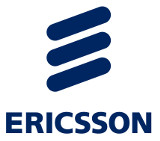Ericsson achieves world first 0.5Gbps data rate with new VDSL2-based broadband technology
Monday, March 16th, 2009
Ericsson (NASDAQ:ERIC) has performed the world’s first live demonstration of a VDSL2-based technology achieving data transfer rates of more than 0.5Gbps. This will allow operators to offer low-cost, high-performance connectivity to an increased range of mobile backhaul customers, enterprise users and residential customers.
The Ericsson demonstration achieved data rates of more than 0,5 Gbps over twisted copper pairs using the latest technology for line bonding and crosstalk cancellation for DSL, also known as “vectorized” VDSL2. The technology is suitable for fiber extensions, combining fiber and last-mile copper for backhauling.
This VDSL2-based technology offers unprecedented speeds on existing copper lines, opening up new opportunities for operators to provide customers with broadband services such as IPTV. With this technology, operators can enhance fiber access deployments with copper access in the last mile and thereby maximize the reuse of existing infrastructure. This means more consumers will be able to enjoy true broadband services such as HDTV and video-on-demand in their homes.
The new technology also makes it possible to use existing copper networks as a backhaul for radio base stations, accelerating future rollout of HSPA and LTE-based high-speed mobile broadband services.
Håkan Eriksson, CTO at Ericsson, says: “This demonstration confirms Ericsson’s leadership in broadband access technology and our commitment to the continued research and development of DSL technology to improve operators’ business with new access solutions. It also proves Ericsson’s abilities to provide future mobile backhauling, which will enable quick and cost-effective introduction of Long Term Evolution (LTE) solutions.”
Crosstalk cancellation, also known as vectorized VDSL2, enables extremely high end-to-end transmission rates, improving VDSL2 performance by reducing noise originating from the other copper pairs in the same cable bundle. This increases capacity and reach, boosting the number of customers that can be connected. Vectoring technology also decouples the lines in a cable (from an interference point of view), substantially improving power management, which can reduce power consumption.
Line bonding means bundling several lines into one and assumes that several copper lines are available at the site, which is typically the case. The demonstration showed aggregated rates of above 0.5Gbps at 500m, bonding six lines. Standards for VDSL2 and line bonding are available today, while the standardization of Vectoring is ongoing and is expected by the end of 2009.
Latest News
- Movistar Plus+ to create real-time short-form sports video with WSC Sports
- SeaChange to instead be acquired by Enghouse
- Rogers to bring Comcast and Xfinity products to Canada
- OTTera partners with ThinkAnalytics on enhanced personalization
- Televisa selects Synamedia edge gateway and distribution platform
- X Corp confirms intention to launch app for Smart TVs